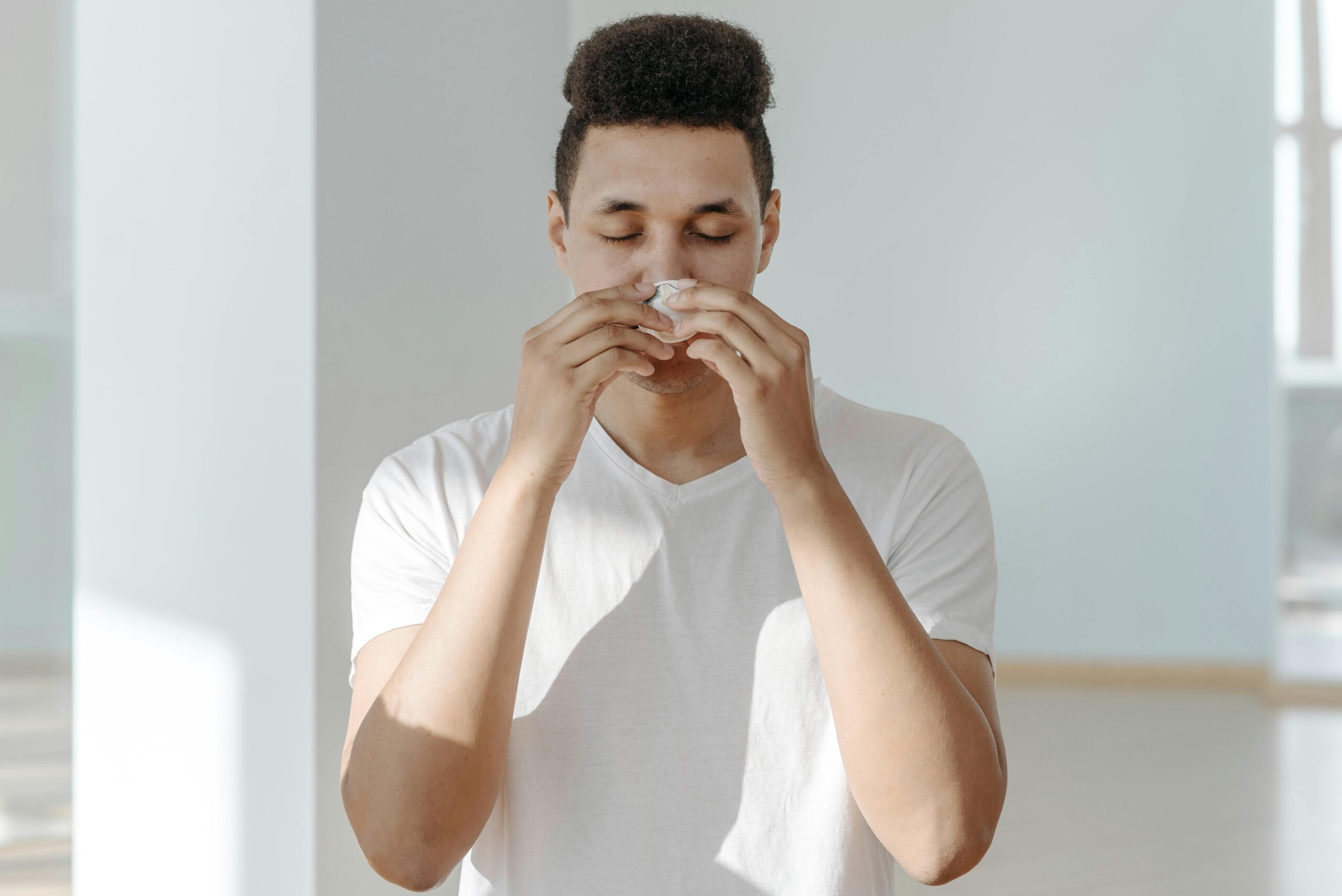If you’ve ever been bothered by allergies or a cold, you probably know how annoying a runny nose and itchy eyes can be. Antihistamines can help with these symptoms, but who wants to feel sleepy all the time? Luckily, non-drowsy OTC antihistamines are here to save the day. Let’s explore what these medications are all about and how you can use them effectively.
Basic Understanding of Antihistamines
What Are Antihistamines?
Antihistamines are medicines that help fight the effects of histamines. Histamines are chemicals your body releases during an allergic reaction. This release can lead to symptoms like sneezing, itching, and swelling. Antihistamines work by blocking these histamines, which helps ease your allergy symptoms.
How Do Antihistamines Work?
Antihistamines work by sticking to histamine receptors in your body. There are two main types of these receptors: H1 and H2. Most allergy medicines target H1 receptors to reduce symptoms like sneezing and itching. By stopping histamines from sticking to these receptors, antihistamines help lessen the annoying effects of allergies.
Types of Antihistamines
First-Generation Antihistamines
First-generation antihistamines, like Benadryl (diphenhydramine), were among the first created. While they are effective, they often make you feel sleepy because they can affect your brain. They are good for strong allergic reactions but might not be the best choice if you need to stay awake and alert.
Second-Generation Antihistamines
Second-generation antihistamines, such as Claritin (loratadine), Zyrtec (cetirizine), and Allegra (fexofenadine), are newer and designed to avoid causing drowsiness. These medicines are less likely to make you sleepy because they don’t cross into your brain as much. They’re great for use during the day when you need to stay focused.
Benefits of Non-Drowsy Antihistamines

Why Non-Drowsy?
Non-drowsy antihistamines are fantastic if you need to stay awake and alert. Imagine being able to handle your workday or enjoy a social event without feeling sleepy. These medications help manage your allergy symptoms effectively while keeping your energy levels up.
Common Uses and Applications
Non-drowsy antihistamines are usually used to treat typical allergy symptoms like sneezing, runny nose, itchy eyes, and hives. They can also help with hay fever, chronic hives, and allergic rhinitis. If you’re dealing with allergies from pets or pollen, these medicines can provide relief without making you drowsy.
Popular Non-Drowsy OTC Antihistamines
1. Claritin (Loratadine)
Claritin is a well-known non-drowsy antihistamine. Its main ingredient is loratadine that helps block histamine and reduce symptoms like sneezing, a runny nose, and itchy eyes. Claritin works for up to 24 hours with just one dose, making it convenient for daily use. It comes in different forms, including tablets, dissolvable tablets, and liquid gels.
Key Features:
- 24-hour relief: One dose lasts all day.
- Different forms: Available as tablets, dissolvable tablets, and liquid gels.
- Non-drowsy: Perfect for daytime use.
2. Zyrtec (Cetirizine)
Zyrtec contains cetirizine that another popular non-drowsy antihistamine. It starts working quickly, usually within an hour. While it is less likely to make you sleepy than older antihistamines, it might still cause a bit of drowsiness in some people. Many find it effective at controlling symptoms without making them too tired.
Key Features:
- Starts quickly: Works within an hour.
- Lasts up to 24 hours: Provides long-lasting relief.
- Good for severe symptoms: Helps with strong allergic reactions.
3. Allegra (Fexofenadine)
Allegra uses fexofenadine which is known for providing powerful relief from allergies without causing drowsiness. It helps manage sneezing, a runny nose, and itchy eyes while letting you stay focused and energetic. Allegra is available in tablets and liquid forms.
Key Features:
- Non-drowsy: Designed to keep you awake.
- Long-lasting: Works for up to 24 hours.
- Various forms: Available as tablets and liquid.
4. Xyzal (Levocetirizine)
Xyzal contains levocetirizine that is a refined version of cetirizine. It provides strong allergy relief with less risk of drowsiness. Xyzal is a good choice for people who have ongoing allergy symptoms and need all-day relief.
Key Features:
- Less drowsiness: Formulated to reduce sleepiness.
- Works for 24 hours: Offers long-term symptom control.
- Good for chronic allergies: Ideal for long-term use.
5. Claritin-D (Loratadine and Pseudoephedrine)
Claritin-D combines loratadine with pseudoephedrine, a decongestant that helps with stuffy noses as well as other allergy symptoms. This combination is especially useful if you have both allergies and nasal congestion. While it usually doesn’t make you drowsy, the decongestant part might be a bit stimulating.
Key Features:
- Dual action: Helps with both allergy symptoms and nasal congestion.
- 24-hour relief: Effective for an entire day.
- Non-drowsy with decongestant: Good for complete symptom relief.
Benefits of Non-Drowsy Antihistamines
1. Enhanced Productivity
One of the key advantages of non-drowsy antihistamines is their ability to improve productivity. Unlike first-generation antihistamines that often cause sedation, these medications allow individuals to remain focused and energetic throughout their daily activities.
2. Safe for Daily Use
Non-drowsy antihistamines are designed for daily use and can be integrated seamlessly into your routine. Their prolonged duration of action means fewer doses are required, enhancing convenience and adherence to the medication regimen.
3. Minimal Side Effects
Compared to their sedating counterparts, non-drowsy antihistamines generally have fewer side effects. This makes them a preferred choice for individuals who experience unwanted side effects from other allergy medications.
Choosing the Right Non-Drowsy Antihistamine
When selecting a non-drowsy antihistamine, consider the following factors:
1. Symptom Type
Different antihistamines may be better suited for specific types of allergies. For instance, cetirizine and loratadine are effective for general allergy symptoms, while fexofenadine may be more suitable for severe cases.
2. Duration of Action
If you need relief throughout the day, opt for antihistamines with a longer duration of action. Medications like loratadine and fexofenadine are designed to last up to 24 hours, ensuring continuous symptom control.
3. Personal Tolerance
Individual responses to antihistamines can vary. If you find that one medication causes mild drowsiness or other side effects, consult with your healthcare provider to explore alternative options.
Potential Side Effects
While non-drowsy antihistamines are generally well-tolerated, it’s essential to be aware of potential side effects. These may include:
- Headache: Some individuals may experience headaches as a side effect.
- Dry Mouth: Antihistamines can cause dryness in the mouth or throat.
- Digestive Issues: Mild stomach discomfort or nausea may occur in rare cases.
If you experience severe or persistent side effects, consult with a healthcare professional for guidance.
Additional Tips for Allergy Management
1. Avoid Triggers
To maximize the effectiveness of antihistamines, it’s crucial to minimize exposure to known allergens. This might involve staying indoors during high pollen counts or using air purifiers to reduce indoor allergens.
2. Complementary Treatments
Consider combining antihistamines with other allergy management strategies, such as nasal sprays or eye drops, for comprehensive relief. Saline nasal sprays can help alleviate nasal congestion, while antihistamine eye drops address itchy or watery eyes.
3. Consult with a Healthcare Professional
Before starting any new medication, including non-drowsy antihistamines, it’s advisable to consult with a healthcare provider. They can offer personalized recommendations based on your medical history and specific needs.
How to Use Non-Drowsy Antihistamines Safely
Dosage Guidelines
Always follow the dosage instructions on the medicine label or as given by your doctor. Taking more than the recommended amount can increase the risk of side effects and won’t improve your symptoms faster. If you’re unsure about the right dose, ask your doctor.
Proper Storage
Keep your antihistamines in a cool, dry place away from sunlight. Make sure they are out of reach of children and not used past their expiration date. Proper storage helps keep the medication effective and safe.
Non-drowsy OTC antihistamines represent a valuable tool for managing allergy symptoms effectively while maintaining daily functionality. With options like loratadine, cetirizine, and fexofenadine, individuals can find relief tailored to their specific needs.
By understanding how these medications work and selecting the right one for your symptoms, you can enjoy a more comfortable, allergy-free life without the burden of drowsiness.
For optimal results, always consider consulting with a healthcare professional to ensure that your chosen antihistamine aligns with your overall health strategy.



